Object of the Month: September 2025
Scientific Drawings by Father Desmond Murray
Published: 18 August 2025
Chosen by Caitlin Price, Collections Access Officer
Scientific Drawings (pencil, ink and watercolour on scrap card)
Early 20th Century
These drawings were created by Father Desmond Murray (1887 – 1967) who was a priest at Holy Cross Priory, New Walk. Father Murray had a lifelong and life shaping interest in moths and butterflies.
As a young priest, Father Murray was sent to the Dominican mission in South Africa where he wrote and illustrated South African Butterflies: A Monograph of the Family Lycaenidae (1935).
In an unusually candid obituary, the scientist-priest was described as follows: ‘a recluse by nature, his irascible turn of mind and dour exterior hid a remarkable kindness of heart’.
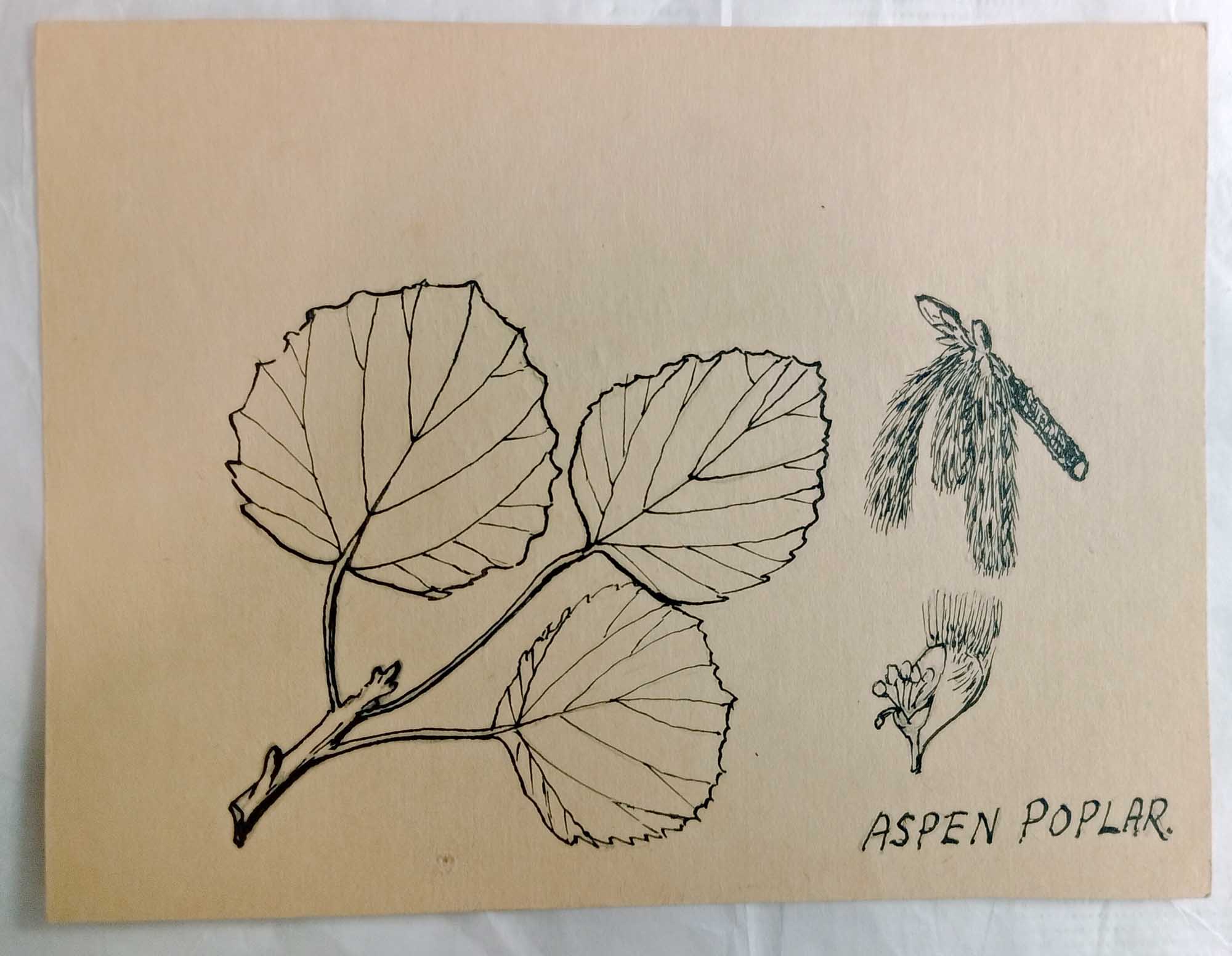
Father Desmond Murray: Leicester’s Scientist-Priest
Whilst carrying out documentation work at Leicester Museum and Art Gallery I came across some beautiful drawings of butterflies and plants. The drawings were stored in a box with a mass book in Latin with the name Rev. D. Murray written in the flyleaves. After some investigating, I discovered that Father Desmond Murray (1887 – 1967) was a Catholic priest who had spent decades serving Holy Cross Priory, New Walk – which is a stone’s throw from the museum – and working as a chaplain for St Martin’s Convent and School in Stoke Golding. Father Murray also had a lifelong and life shaping obsession with insects.
A Lepidopterist in South Africa
Father Murray was a Fellow of the Royal Entomological Society and he wrote and illustrated multiple books about insects. Moths and butterflies were his particular interests making him a lepidopterist. In 1924, aged 37, Father Murray was sent to the Dominican mission in South Africa. He used this opportunity to learn first-hand about African flora and fauna. Whilst there he was made an Honorary Curator of Entomology for the Zoology Department at Wits University in Johannesburg.
Towards the end of his time in South Africa he wrote and illustrated South African Butterflies: A Monograph of the Family Lycaenidae (1935) which was praised by a reviewer for its ‘excellent and beautifully reproduced illustrations’ (Supplement to ‘Nature’, March 14, 1936, p. 445). Unfortunately, the same review went on to state that ‘the inadequacy of references detracts from its value as a systematic work, and the manner in which many of the author's statements are presented leaves much to be desired’.
When Father Murray arrived in South Africa in 1924, he was one of only four Dominican priests who had been sent to the gold mining towns of Boksburg, Brakpan and Springs. According to Father Joseph Falkiner, the missions’ priests came from ‘a different milieu in England, [and] they found it difficult to fit in’ with ‘most of the first group [returning] overseas unhappy or ill’ (The First Dominican Friars in Boksburg, Brakpan and Springs - South Africa (1917-1927)).
Father Murray bucked the trend as he stayed in South Africa for fourteen years. Many of the missions’ priests chose ‘not to get involved with the racial and social animosities […] that led eventually to an apartheid government’ (The First Dominican Friars). Again, Father Murray went against the grain, spelling out the racial and social animosities in South Africa in his book African Night: A Study in Black and White (1944).
Not a People Person?
Despite the empathy which Father Murray displayed in African Night, some evidence suggests that he was a misanthrope, favouring insects over people. Either from a lack of sentimentality or a sense of frugality, Father Murray produced his drawings of insects and plants on scraps of card, including the back of an invitation to a St Patrick’s dance in Brakpan and several cut-up Christmas cards. On one card the sentiment ‘With Best Wishes for a very Happy Christmas and a Bright New Year’ has been definitively crossed out and a plant corm has been drawn and labelled on the opposing side. A cut-up Christmas card with a handwritten message ‘from Nora’ has an aspen poplar on its reverse and a handwritten card ‘from Mrs Vireert & family’ has a tamarisk plant on its back.
In an unusually candid obituary – if accurate – Father Murray was described as follows: ‘A recluse by nature, his irascible turn of mind and dour exterior hid a remarkable kindness of heart’ (Obituary Notices of the English Dominicans from 1952 to 1996 (2000)). The social and pastoral roles of parish priest and chaplain must have been an uneasy fit for a ‘reclusive’ scientist with misanthropic tendencies.
Despite this, Father Murray’s vocation and his passion for insects lasted a lifetime and he died in 1967, just days after offering mass. We are fortunate to hold the drawings of Leicester’s lepidopterist-priest.
Caitlin, Collections Officer
Scientific Drawings Gallery
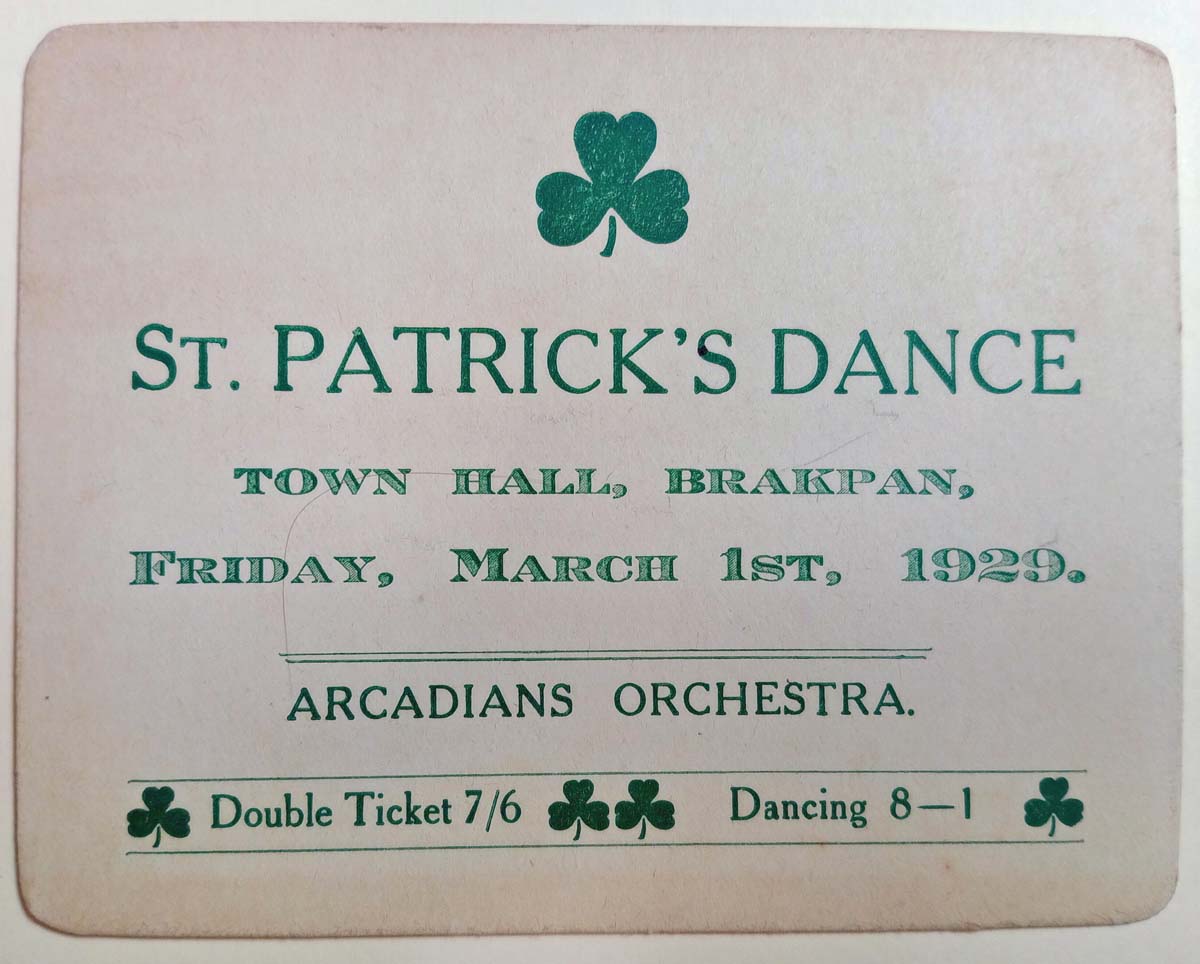
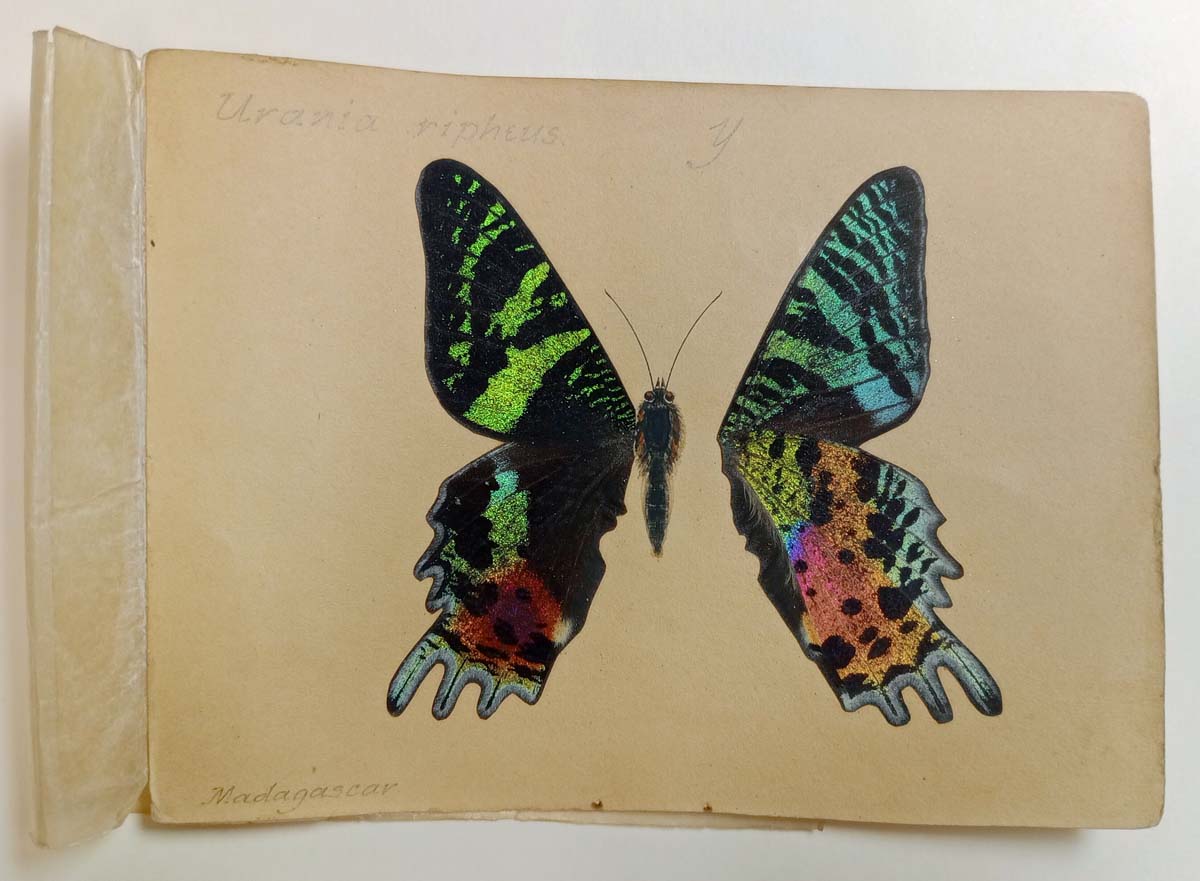
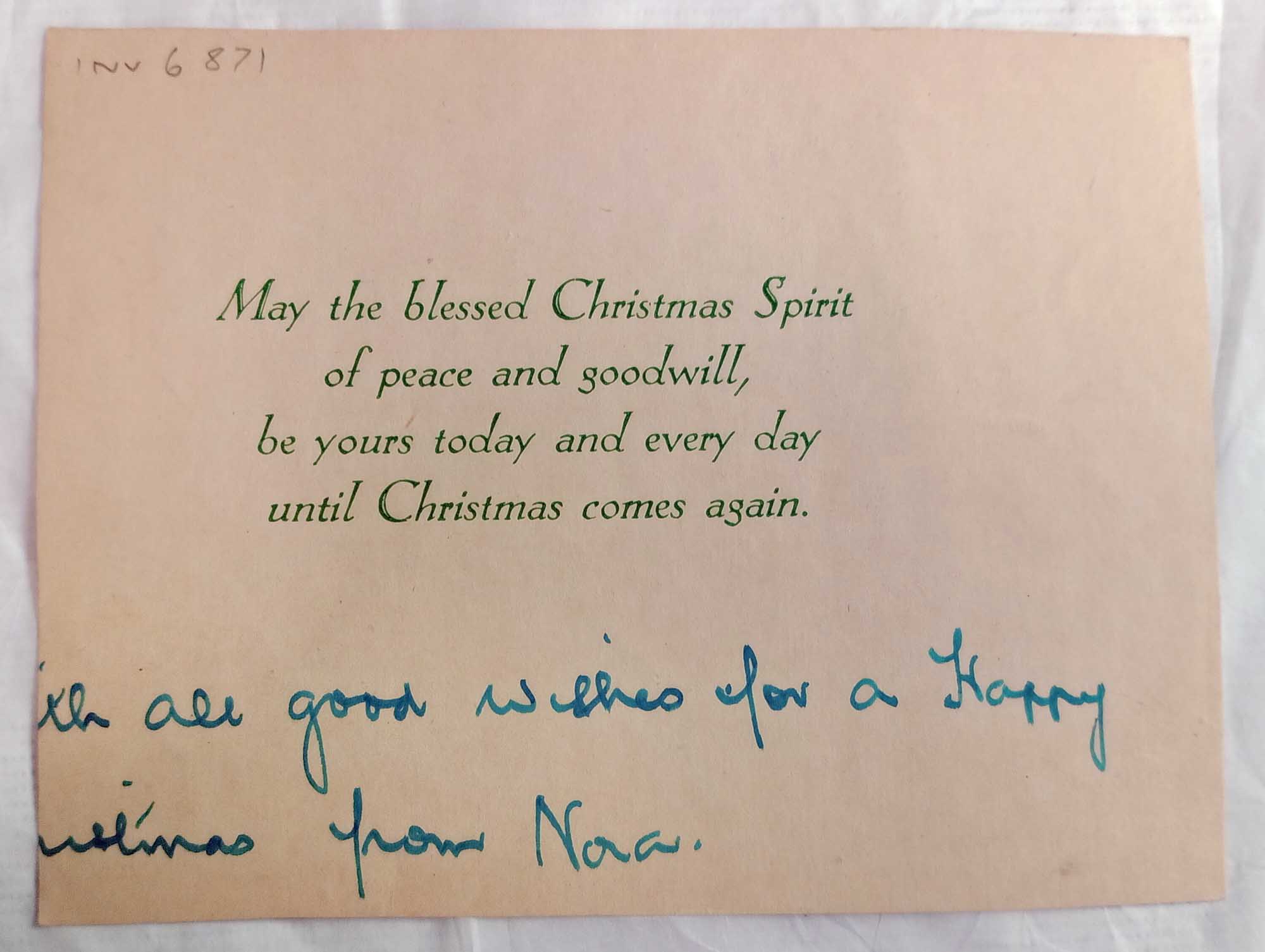
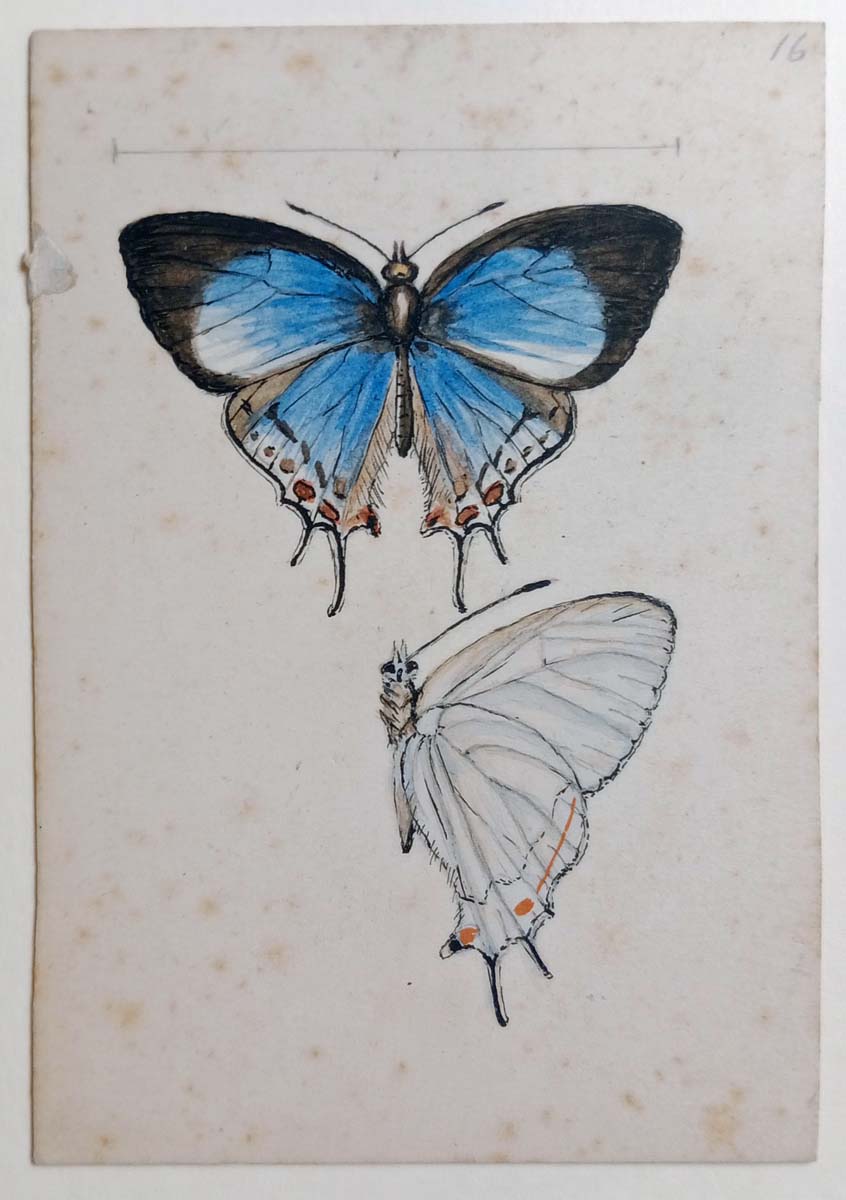
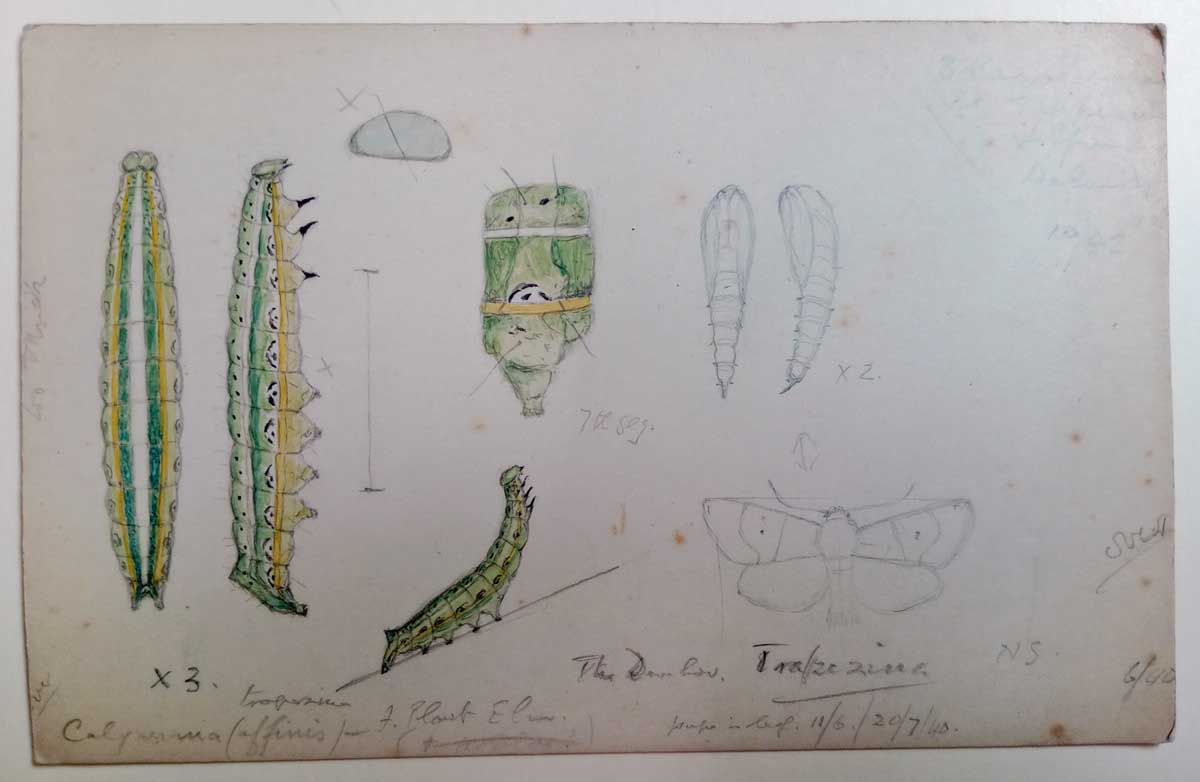
The Object of the Month can be seen in person throughout September at Leicester Museum & Art Gallery.
